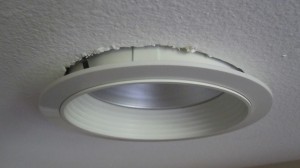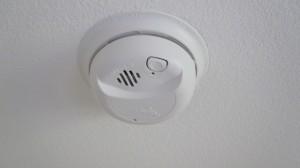With today’s economy, people are looking for ways to save money. What if you could save $40-50 a month on your utility bills just by making a few adjustments to your home? For the average American family, heating and cooling typically account for the largest portion of the utility bill. By making a few simple changes to your home, you can achieve significant savings. Below are my recommendations for the least expensive changes that will have the biggest impact.
- Add a programmable thermostat: If you’re like me, you go to bed and get up at about the same time every day. When you have a programmable thermostat, you can have your heating or cooling system set to work less when you are sleeping and save you money. You can get a good thermostat at any home improvement store for under $75 and install it in five minutes.
- Insulate the top 1/3 of your basement wall. If you have an unfinished basement and the walls are not insulated, you are throwing money out the window. Up to 30% of your heat loss can be through your basement walls. Remove each piece of rim joist insulation (the rim is the area above the basement wall and below the first floor subfloor) and look for any gaps or holes to fill with caulk or expandable foam. Then place the insulation back neatly (Note: this will also help keep bugs out). Now insulate the top 1/3 of the poured concrete or block foundation wall (Note: A walkout or garden basement framed wall will probably already be insulated). You will want to check with your local building department to see what type of insulation they recommend. For the houses I have built in the midwest states I have used a fiberglass roll insulation with a vapor barrier on the outside (facing the interior of the basement). The cost of this energy improvement will vary depending on the size of your basement. For the average sized American home you can figure to spend $200 or so if you do the install. Add another $200 if you plan on having someone else do the work.
- Seal up penetrations in your second floor ceiling (or first floor on a ranch). There are quite a few penetrations in the typical second floor ceiling. This includes everything from recessed cans to electrical boxes. Each of these openings has a gap between the box, housing or wire and the drywall. Get a caulk gun and a tube of caulk or an expandable foam in a can and seal these up. You will need to pull back the insulation to get to the area. Caution: make sure you don’t step on anything that isn’t a framing member that can’t support your weight! Be sure to neatly place the insulation back so it works as designed. This energy improvement will take a few hours from your Saturday and will cost $10 for the foam or caulk.
- Seal up Attic Access Panels. I can’t tell you how many access panels I have come across in existing homes that aren’t insulated. Yes that’s right, no insulation. None. Why is this a problem? Your attic access is approximately six square feet of ceiling area for each panel. Without any insulation, you are creating a big chimney for the precious treated air in your home to escape. At a minimum, get an R-30 batt of fiberglass insulation and secure it to the back of the access panel. If you rarely use the access, I would also put a bead of caulk around it to seal it off. The only cost associated with this is the small piece of insulation and maybe a bruised ego for not having done anything about this sooner.
Do you have any low-cost tips for saving money on your utility bills? Please share with us.





Great post on saving on utility bills. It is also possible to save money on utility bills by comparing and switching the utility suppliers. You can have more information at http://maketheswitchusa.com/nj/electric-rates/